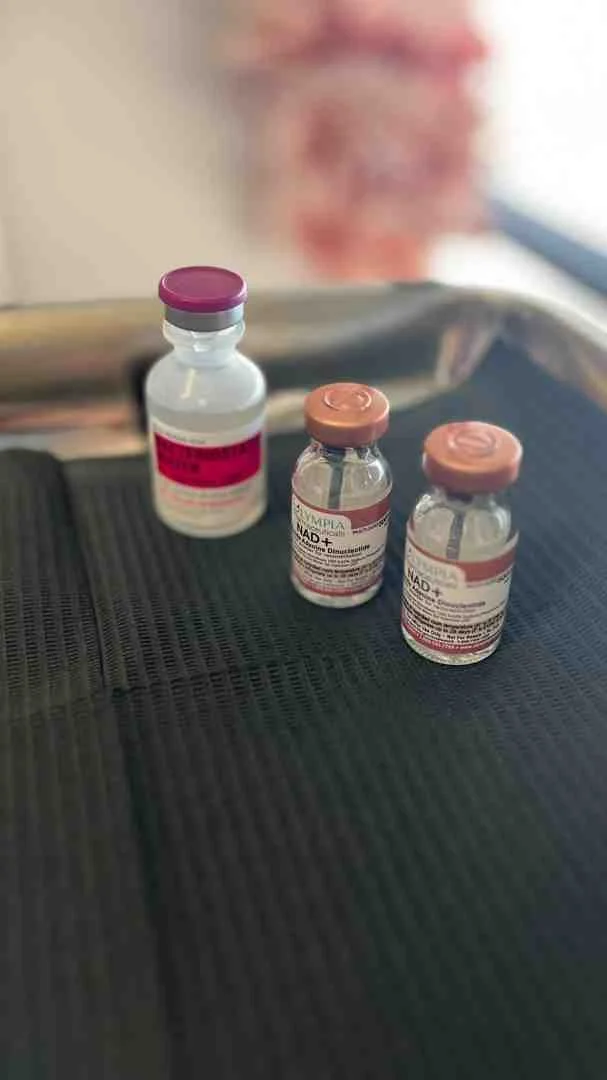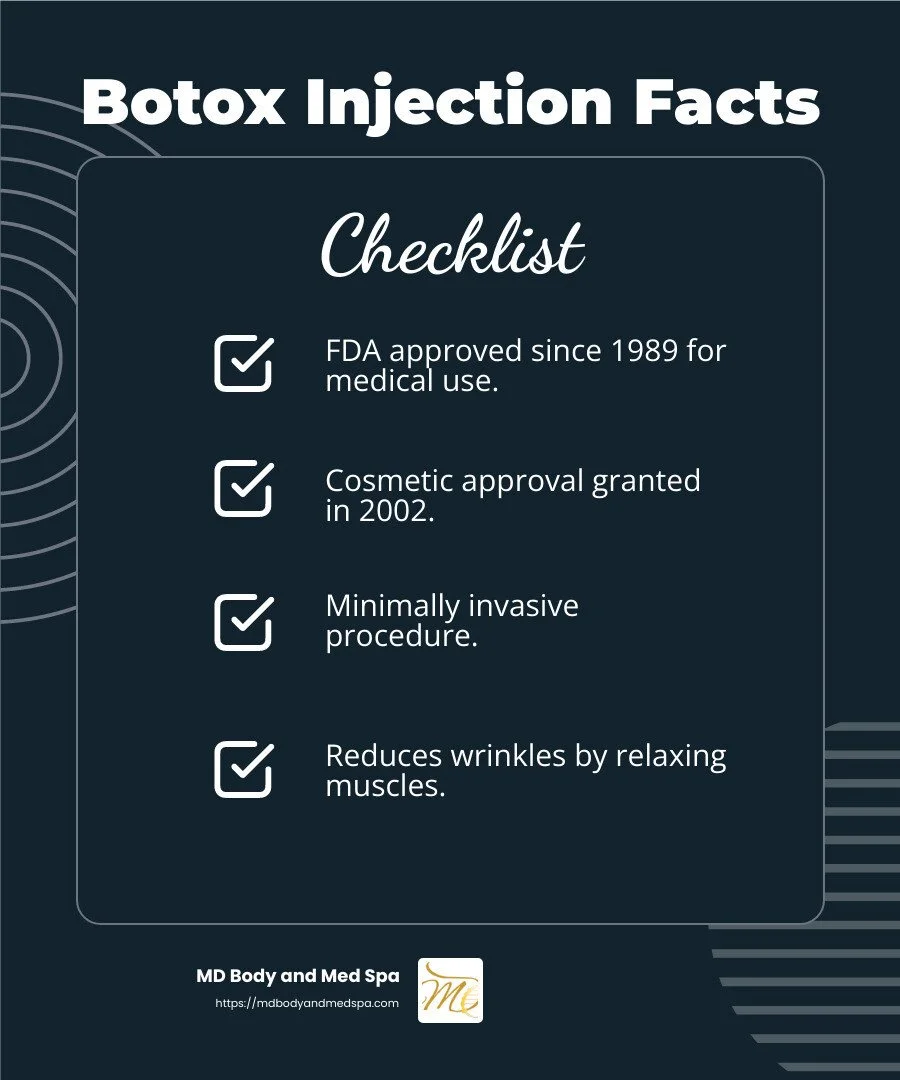Botox Basics: Understanding the Uses and Benefits of Injections
Botox injections have become a renowned choice for those seeking both cosmetic improvements and medical treatments. Derived from botulinum toxin, these injections work by blocking nerve signals to specific muscles, causing them to relax. This offers smooth, youthful skin by reducing wrinkles, particularly in the forehead and around the eyes. Beyond aesthetics, Botox serves various medical purposes such as easing chronic migraines, reducing excessive sweating, and alleviating certain muscle conditions.
In short:
Cosmetic Uses:
Reduces fine lines and wrinkles
Smoother facial appearance
Medical Uses:
Treats chronic migraines
Helps manage excessive sweating
Eases muscle spasms
I'm Rachel Stone, a seasoned expert in medical aesthetics, with extensive expertise in botox injections. My background includes advanced training and a commitment to helping individuals achieve confidence through safe and effective treatments. Now, let's explore more about botulinum toxin, its specific applications, and why it's trusted by many today.
What Are Botox Injections?
Botox injections are a popular treatment derived from botulinum toxin, a neurotoxin produced by the bacterium Clostridium botulinum. In controlled, small doses, this toxin is used for therapeutic and cosmetic purposes.
How It Works
Botulinum toxin works by blocking nerve signals in the muscles where it is injected. When these signals are interrupted, the affected muscles can no longer contract. This leads to a temporary relaxation of the muscle.
Wrinkle Reduction
One of the primary cosmetic benefits of Botox is its ability to reduce the appearance of facial wrinkles. By relaxing the muscles that cause lines and creases, Botox smooths out the skin, making it appear more youthful.
Common treatment areas include:
Forehead lines: Horizontal lines that form when you raise your eyebrows.
Crow's feet: Lines that appear at the corners of your eyes when you smile.
Frown lines: Vertical lines between your eyebrows.
Beyond Aesthetics
While Botox is widely known for its cosmetic benefits, it also has several medical applications. These include treating chronic migraines, excessive sweating, and muscle spasms.
In fact, Botox was initially approved by the FDA in 1989 for medical use before gaining approval for cosmetic use in 2002.
Botox injections are a minimally invasive procedure, making them a popular choice for those looking to improve their appearance or alleviate specific medical conditions without undergoing surgery.
In summary, Botox injections offer a versatile solution for both cosmetic and medical needs, helping individuals achieve smoother skin and relief from certain medical conditions.
Uses of Botox Injections
Botox injections are not just for smoothing out wrinkles. They have a wide range of uses, both cosmetic and medical, that have been approved by the FDA.
Cosmetic Uses
Wrinkle Treatment
Botox is best known for its ability to reduce the appearance of wrinkles. It works wonders on facial lines, particularly in areas like the:
Forehead: Those horizontal lines that appear when you raise your eyebrows can be softened.
Crow's Feet: These are the fine lines that fan out from the corners of your eyes when you smile.
Frown Lines: The vertical lines between your eyebrows can be minimized, giving you a more relaxed appearance.
By temporarily paralyzing the muscles responsible for these lines, Botox helps your skin look smoother and more youthful.
Medical Uses
Beyond aesthetics, Botox has several important medical applications:
Migraine Prevention
For those who suffer from chronic migraines, Botox injections can be a game-changer. The FDA has approved Botox for preventing migraines in individuals who experience headaches 15 or more days a month. These injections help reduce the frequency of migraines by blocking pain signals in the nerves.
Hyperhidrosis (Excessive Sweating)
If you sweat excessively, even when you're not hot or active, Botox can help. This condition, known as hyperhidrosis, can be managed with Botox injections, which temporarily block the chemical signals from the nerves that stimulate sweat glands.
Muscle Spasms
Botox is also effective in treating muscle spasms. It can help relax the muscles in conditions like cervical dystonia (neck spasms) and other nervous system disorders that cause uncontrolled muscle contractions. By blocking nerve signals, Botox reduces the severity and frequency of these spasms.
In conclusion, Botox injections offer a dual benefit: they improve your appearance by reducing wrinkles and provide relief from several medical conditions. Whether you're looking to smooth out lines or manage chronic issues like migraines or hyperhidrosis, Botox might be the solution you need.
How Botox Injections Work
Botox injections are fascinating because they work by targeting the communication system between your nerves and muscles. Here's how they do it:
Nerve Signals
Your body's nerves send signals to muscles, telling them when to contract. This is how you make facial expressions, like frowning or smiling. But sometimes, those signals can create unwanted wrinkles or muscle spasms.
Muscle Contraction
When a nerve sends a signal to a muscle, it releases a chemical called a neurotransmitter. This neurotransmitter is called acetylcholine. It binds to muscle cells and tells them to contract. This is what happens when you furrow your brow or squint your eyes.
Neurotransmitter Blocking
This is where Botox comes in. Botox injections contain a purified form of botulinum toxin. This toxin temporarily blocks the release of acetylcholine. Without this neurotransmitter, the muscle can't contract.
So, when Botox is injected into specific muscles, it stops them from contracting as much. This reduces the appearance of wrinkles and can also help with medical conditions like muscle spasms or migraines.
The effects of Botox are temporary. They usually last between 3 to 4 months. After that, the nerve endings start to recover, and muscle activity returns. That's why regular follow-up treatments are often needed to maintain the results.
Botox works by calming down overactive muscles. Whether it's smoothing out a wrinkle or easing a muscle spasm, it's all about blocking those nerve signals.
Risks and Side Effects
While Botox injections are generally safe, be aware of the potential risks and side effects. Understanding these can help you make an informed decision and ensure a smooth experience.
Common Side Effects
Most people experience only mild side effects. These can include:
Pain or discomfort at the injection site.
Swelling or bruising around the treated area.
Headaches or a feeling of tiredness.
These side effects are usually short-lived and resolve on their own. Applying ice can help reduce swelling and discomfort.
Serious Reactions
Though rare, serious reactions can occur. Be on the lookout for:
Muscle weakness beyond the injection site.
Vision problems like blurred or double vision.
Trouble swallowing or breathing.
If you experience any of these symptoms, contact your healthcare provider immediately. These may indicate that the Botox has spread beyond the targeted area, a condition known as systemic iatrogenic botulism.
Safety Precautions
To minimize risks, follow these safety tips:
Choose a licensed and experienced provider. Proper technique is crucial to avoid complications.
Avoid rubbing or massaging the treated area for at least 24 hours. This helps prevent the Botox from spreading to unintended areas.
Inform your doctor about any medications or supplements you're taking. Some drugs can interact with Botox, increasing the risk of side effects.
Botox is not recommended if you're pregnant or breastfeeding. Always discuss your complete medical history with your provider to ensure Botox is a suitable option for you.
Understanding these risks and precautions can help you enjoy the benefits of Botox safely. Now, let's address some common questions about Botox injections.
Frequently Asked Questions about Botox Injections
How long do Botox injections usually last?
Botox injections typically last between three to six months. Over time, as the effects wear off, you might notice your fine lines and wrinkles reappearing. This is because the muscles gradually regain their ability to contract.
Interestingly, with regular treatments, many people find that their muscles "learn" to contract less often or less intensely. This means you might need fewer injections over time to maintain your desired look.
What are the bad side effects of Botox?
While most people experience only mild side effects, it's important to know what might happen. Common side effects include:
Bruising or swelling at the injection site
Headaches or a feeling of tiredness
Pain or discomfort where the needle was used
These side effects usually go away on their own within a few days.
However, more serious symptoms, though rare, can occur. These include:
Muscle weakness that spreads beyond the treated area
Vision problems such as blurred or double vision
Difficulty swallowing or breathing
If you experience any of these serious symptoms, contact your healthcare provider immediately. These might indicate that the Botox has spread beyond where it was intended.
How much does an injection of Botox cost?
The cost of Botox injections can vary based on several factors, such as the depth of your wrinkles, the size of the treatment area, and even the location of the clinic. On average, a session can cost around $435. However, this price can fluctuate depending on your specific needs and the expertise of your provider.
It's also important to remember that Botox for cosmetic purposes is generally not covered by insurance. If you're considering Botox for a medical condition, check with your insurance provider to see if coverage is available.
Understanding these aspects can help you make informed decisions about Botox treatments. Now, let's explore how Botox injections work to achieve their effects.
Conclusion
At MD Body and Med Spa, we believe that enhancing your health and confidence is a journey that should be personalized and empowering. Our Botox injections are part of a comprehensive approach to help you look and feel your best. Whether you're seeking to reduce wrinkles or manage a medical condition, our expert team is here to guide you every step of the way.
Personalized Services: We understand that each individual is unique. That's why we offer customized treatment plans tailored to your specific needs and goals. Our skilled professionals use cutting-edge techniques to ensure you receive the highest standard of care.
Health and Confidence Improvement: Our goal is not just to improve your appearance but to boost your overall well-being. Many of our clients report a significant increase in self-confidence after their treatments. Feeling good about how you look can positively impact various aspects of your life, from personal relationships to professional interactions.
Choosing MD Body and Med Spa means choosing a partner committed to your health and happiness. We invite you to explore our injectables and fillers to find how we can help you achieve your desired results.
Experience the difference personalized care can make. Let us support you on your journey to improved health and confidence.




